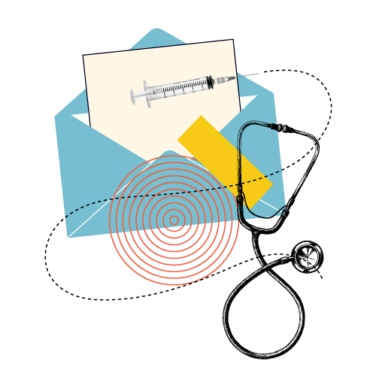Medical billing involves task-oriented activities like coding, claim submission, and payment posting. It's a transaction-heavy component vital for financial accuracy in healthcare practices.
Revenue Cycle Management encompasses the entire financial journey of a patient, from appointment scheduling to final payment, ensuring a streamlined and effective cash flow.
While related, medical billing and RCM require different strategies. Understanding their differences enhances practice efficiency and staff performance.
As someone who’s been managing medical practices for years, I’ve seen how often people—both inside and outside the clinic—confuse medical billing with revenue cycle management (RCM). They’re related, sure, but they’re far from the same. Understanding the difference can make or break how efficiently your practice runs, how well your staff functions, and ultimately, how healthy your cash flow is.
Let’s clear it up.
What is Medical Billing?
Medical billing is the administrative process of submitting claims to insurance companies and following up to get reimbursed. This includes coding procedures, sending claims, tracking denials, resubmitting if necessary, and collecting patient balances.
In practical terms, when I think of medical billing, I think of the hands-on work done by my billing team every day—CPT coding, charge entry, claim scrubbing, posting payments, and dealing with denials and appeals.
It’s very task-focused and transaction-heavy, and while it’s critical, it’s only one phase in the larger financial management picture of your practice.
What is Revenue Cycle Management (RCM) in Healthcare Practices?
Revenue cycle management (RCM) is the full lifecycle of a patient’s financial journey—from the moment they schedule an appointment to the final payment collected (by insurance or the patient).
RCM in medical practice management is a much broader and strategic process that includes:
- Pre-registration and insurance verification
- Authorization and eligibility checks
- Coding and billing (yes, billing is a part of RCM)
- Claim submission and adjudication
- Payment posting
- Patient collections
- Reporting and financial analysis
When I oversee RCM, I’m looking at the big picture. I want to know: Are we verifying insurance correctly up front? Are our denial rates trending up or down? Are we capturing all revenue opportunities? It’s not just about sending out bills—it’s about optimizing every step to reduce leakage and improve the patient's financial experience.
Key Differences Between Revenue Cycle Management and Medical Billing
Now let’s get into the specific ways these two processes differ, especially from a management point of view:
1. Integration of Processes/Departments:
Medical Billing tends to operate as its own department or function, often siloed from front desk, clinical teams, and even scheduling.
RCM, on the other hand, is cross-functional. It requires coordination between scheduling, front office, clinical documentation, coding, billing, and collections. You can't improve RCM if these departments aren’t communicating.
From my experience, fixing problems in the RCM flow often means pulling multiple teams into the same room and fixing the upstream issues—not just patching billing errors at the end.
2. Required Timeframe:
Medical Billing is reactive. It kicks in after services have been rendered.
RCM is proactive. It starts before the patient even steps through the door. Eligibility checks, prior authorizations, and patient financial counseling all fall under RCM and happen pre-visit.
Practices that ignore the front-end parts of RCM usually see more claim denials and slower reimbursements. I’ve had to rebuild RCM processes in the past because the front desk wasn’t trained in verifying coverage properly.
3. Emphasis on Patient Experience:
Medical Billing mostly deals with claims and payments—not patient satisfaction.
RCM has a direct impact on the patient experience, especially around cost transparency, understanding their benefits, and avoiding surprise bills.
I’ve seen how a solid RCM workflow that includes upfront communication with patients makes them feel respected—and more likely to pay their portion on time.
4. Data Analysis and Reporting:
Medical Billing provides basic financial reports—like aging reports, collection ratios, and write-offs.
RCM provides deeper insights. You’re tracking denial trends, clean claim rates, days in A/R, and front-end errors. You can spot bottlenecks and fix them before they cost the practice.
In my role, I rely heavily on these metrics to make decisions. If I see our denial rate creeping above 5%, I know we’ve got a systemic issue to fix—not just a billing glitch.
5. Risk Management:
Medical Billing deals with individual claim errors—wrong codes, missing modifiers, etc.
RCM manages financial and compliance risk. You’re making sure documentation supports billing, that services are coded properly, and that payer contracts are optimized. It also helps reduce the risk of audits and penalties.
I've had to implement chart audits and workflow reviews after noticing compliance issues that were only caught because our RCM dashboard flagged them.
6. Staffing and Training:
Here’s another key point I don’t see talked about enough.
Medical Billers typically focus on coding knowledge, insurance rules, and claim edits.
RCM Teams need a mix—front office, billing, coding, finance, and even IT. And they need to be trained to think systemically. It’s harder to build, but the payoff is massive.
7. Technology Use:
Medical Billing Software handles claim creation, scrubbing, and submissions.
RCM Platforms are more integrated. They often include tools for eligibility checks, analytics dashboards, denial management, patient communication, and financial reporting.
When I upgraded to a true RCM platform a few years ago, it was a learning curve—but our collections jumped and our days in A/R dropped by nearly 25%.
Medical Billing Process vs RCM Process
When people talk about the medical billing process and the revenue cycle management process, they often use the terms interchangeably. But as someone who’s managed both ends in a medical practice, I can tell you they’re not quite the same thing.
Let’s break each one down step by step.
Medical Billing: Step-by-Step Process
The medical billing process is the engine room of the practice’s financial operations. It kicks in after the patient visit, and runs through to the final bill being paid. If your team—or the medical billing services you outsource to—don’t get this right, your financial health takes a hit.
Here’s the medical billing process:
- Patient Registration: Capture patient demographics and verify insurance coverage. Make sure everything is accurate—this helps prevent denied claims down the line.
- Charge Entry: Once the visit is complete, services are coded and charges entered into the billing system. Accurate coding here is key to compliance and timely reimbursement.
- Claim Creation: The biller generates a claim based on the patient’s encounter. This claim includes codes, modifiers, and insurance information.
- Claim Scrubbing & Submission: Claims go through a scrubber to catch basic errors. Once cleared, they’re submitted electronically to the payer.
- Payment Posting: Payments from insurers and patients are posted. This includes co-pays, deductibles, and co-insurance.
- Denial Management: If claims are rejected or denied, staff investigate, correct, and resubmit. Tackling denied claims quickly improves cash flow.
- Patient Billing & Collections: After insurance pays its portion, any balance due is billed to the patient. Follow-ups are essential to reduce accounts receivable aging.
- Reporting: Regular financial reports help assess financial performance and spot issues early.
RCM in Healthcare: Step-by-Step Process
Now, RCM in healthcare is broader. Think of it as the full lifecycle of how a practice gets paid, from scheduling to final payment collection. Good revenue cycle management is about more than billing—it’s about financial management across the whole patient journey.
Here’s the revenue cycle management process:
- Pre-Registration: Even before the visit, gather patient info, verify insurance coverage, and check for required pre-authorization. This is where we begin to streamline the process.
- Eligibility & Benefits Verification: Double-check what the insurance will cover and what the patient owes. This sets clear expectations and reduces surprises.
- Scheduling & Authorization: Ensure any services that require pre-authorization are cleared. Denials often come from missing this step.
- Patient Encounter & Documentation: Providers document services in the EHR. That documentation must support the codes that go into billing.
- Charge Capture & Coding: Accurate charge capture, done in real-time if possible, speeds up the rest of the billing process.
- Claim Management: This includes outsourcing to medical billing services or handling claims internally—scrubbing, submitting, and tracking claims.
- Remittance Processing & Reconciliation: Insurer payments are posted and matched to claims. Discrepancies are flagged immediately for review.
- Denial Management: Track, appeal, and reduce denied claims. This keeps your accounts receivable in check.
- Patient Collections: Follow up on patient responsibility balances with a structured collection process. This is where practices often lose money if they don’t follow through.
- Performance Reporting & Analytics: This is where financial performance and financial health get assessed. RCM tools can help identify trends, leakages, and opportunities to streamline even further.
In my experience, if your practice is just focusing on the medical billing process, you’re missing a big part of what affects your revenue. It’s the full revenue cycle management process that protects your bottom line, boosts financial operations, and supports long-term financial management. Investing in a solid RCM strategy—whether in-house or outsourced—pays for itself.
Medical Billing vs RCM: FAQs
Here are some questions people also ask me about comparing medical billing and RCM processes in their healthcare practice.
How do healthcare providers benefit differently from medical billing vs revenue cycle management (RCM)?
Healthcare providers and healthcare organizations rely on both medical billing and revenue cycle management (RCM), but each has a distinct role.
A) Medical billing focuses on the submission of claims to insurance providers or health insurance companies for individual services.
B) RCM takes a more comprehensive approach, including patient registration, insurance coverage verification, and payment collection.
While medical billing supports healthcare services at a transactional level, RCM streamlines the entire financial process from start to finish.
Why is accurate medical coding important in both medical billing and RCM?
Accurate medical coding is vital in both medical billing and revenue cycle management. Systems like ICD-10 ensure proper claims processing and submission of claims. In RCM, coding also affects eligibility verification, charge capture, and denied claims. Errors can hurt financial health. While medical billing applies codes, RCM integrates them to maintain financial accuracy and prevent disruptions.
How do patient-facing administrative tasks differ in medical billing vs RCM?
Patient services like patient registration, follow-up, and patient engagement support medical billing by ensuring accurate claims. Revenue cycle management (RCM) goes further, integrating in-house payment collection, denied claims prevention, and financial health tracking. RCM takes a comprehensive approach to each touchpoint, improving both the patient experience and financial outcomes.
What Next?
Medical billing is essential. But if that’s all you’re focused on, you’re leaving money on the table. Revenue cycle management is where a practice really builds financial strength.
As a practice manager, my job isn’t just to get claims out the door—it’s to make sure the entire revenue cycle is tight, efficient, and working in sync. If you’re still treating billing and RCM as the same thing, it’s time to zoom out and see the bigger picture.


